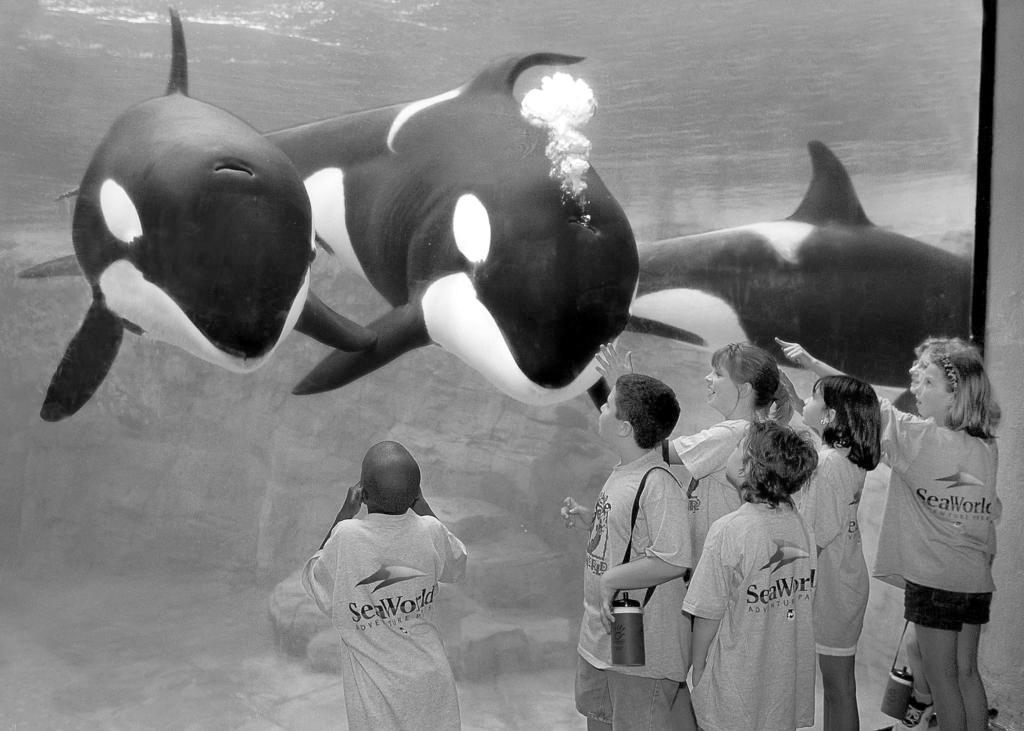After years of biting criticism by animal-rights groups and the general public, SeaWorld this week announced that it will immediately cease breeding killer whales, arguably the company’s signature attraction.
A typical indictment of SeaWorld’s orca program, from PETA’s SeaWorldofHurt (“Where Happiness Tanks”) website, reads as follows:
SeaWorld, which owns all but one of the orcas held captive in the U.S., has a long history of mistreating animals. In the wild, orcas are intelligent predators who work cooperatively in search of food. They share intricate relationships in a matrilineal society. In some populations, orcas rarely leave their mother’s pod, but at SeaWorld, they are often separated. These attributes, along with wild orca pods’ unique dialects, are considered a form of culture that is unrivaled by any species other than humans. Free orcas are among the fastest animals in the sea, and they swim as far as 100 miles every day. But at SeaWorld, they swim in endless circles in small barren concrete tanks.
RELATED: Caesars Raises Resort Fees at 5 Vegas Hotels… I Mean Resorts
As recently as December 29, 2015, the company stood solidly behind the program, filing a legal brief challenging a California Coastal Commission mandate that the company discontinue breeding orcas at SeaWorld San Diego.
But now, less than three months later, the company is not only promoting its embrace of a no-breeding policy, it’s attempting to reposition the company as a champion of animal rescue and rehabilitation.
Last night on NPR, the CEO of SeaWorld Parks and Entertainment, Joel Manby, declared it “a new day for SeaWorld.” That was just a small part of an all-out P.R. offensive, which included an extended editorial in the L.A. Times, penned by none other than Mr. Manby himself. There, Manby tried to credit his company for the change in consciousness that underlies the criticism of SeaWorld’s Orca program. “We are proud of contributing to the evolving understanding of one of the world’s largest marine mammals. Now we need to respond to the attitudinal change that we helped to create – which is why SeaWorld is announcing several historic changes.”
In addition to ceasing orca breeding, Manby promised that the current generation of orcas in captivity at SeaWorld would be the last, and that “theatrical orca whale shows” would be phased out.
PETA welcomed the move, but characterized it as but a first step: “While this decision is a step in the right direction, to do right by the orcas now, SeaWorld must move these long-suffering animals to ocean sanctuaries so that they may have some semblance of a natural life outside their prison tanks. And we must remember the other animals who will remain in captivity until SeaWorld does right by all of them.”
For anyone wishing to see killer whales in captivity at one of SeaWorld’s three U.S. parks, the clock is ticking. Longer term, the larger debate about the morality of keeping any animal in captivity continues, perhaps with renewed intensity. In fact, this high-profile move by SeaWorld could be a turning point, solidifying a vision of a world in which zoos and animal parks simply don’t exist.
Reader Reality Check
According to PETA, “Animals are not ours to eat, wear, experiment on, use for entertainment, or abuse in any other way.” Do you agree?
After 20 years working in the travel industry, and almost that long writing about it, Tim Winship knows a thing or two about travel. Follow him on Twitter @twinship.
This article first appeared on SmarterTravel.com, where Tim Winship is Editor-at-Large.



1000% agree. Go Vegan!
10001% agree 😉 let’s finally develop a conscience regarding animal treatment. If you care (or dare) to look even a tiny bit closer, horrors unfold.
I can’t drink milk or any dairy anymore after seeing what the dairy industry does to sweet cows and calves.
Just one of many many many aspects. And this is coming from a recent ex- burger lover.
Its wrong what we do. Please realize and help. I do now, and hope its not too late.
Even since the killing of Marius the giraffe at Copenhagen Zoo, I have hated zoos, and refuse to visit them (or other parks which have animals in captivity). Animals belong in the wild, not in a cage. They were not created for our benefit.
YESSS! More people need to speak up and spread the word. Well said